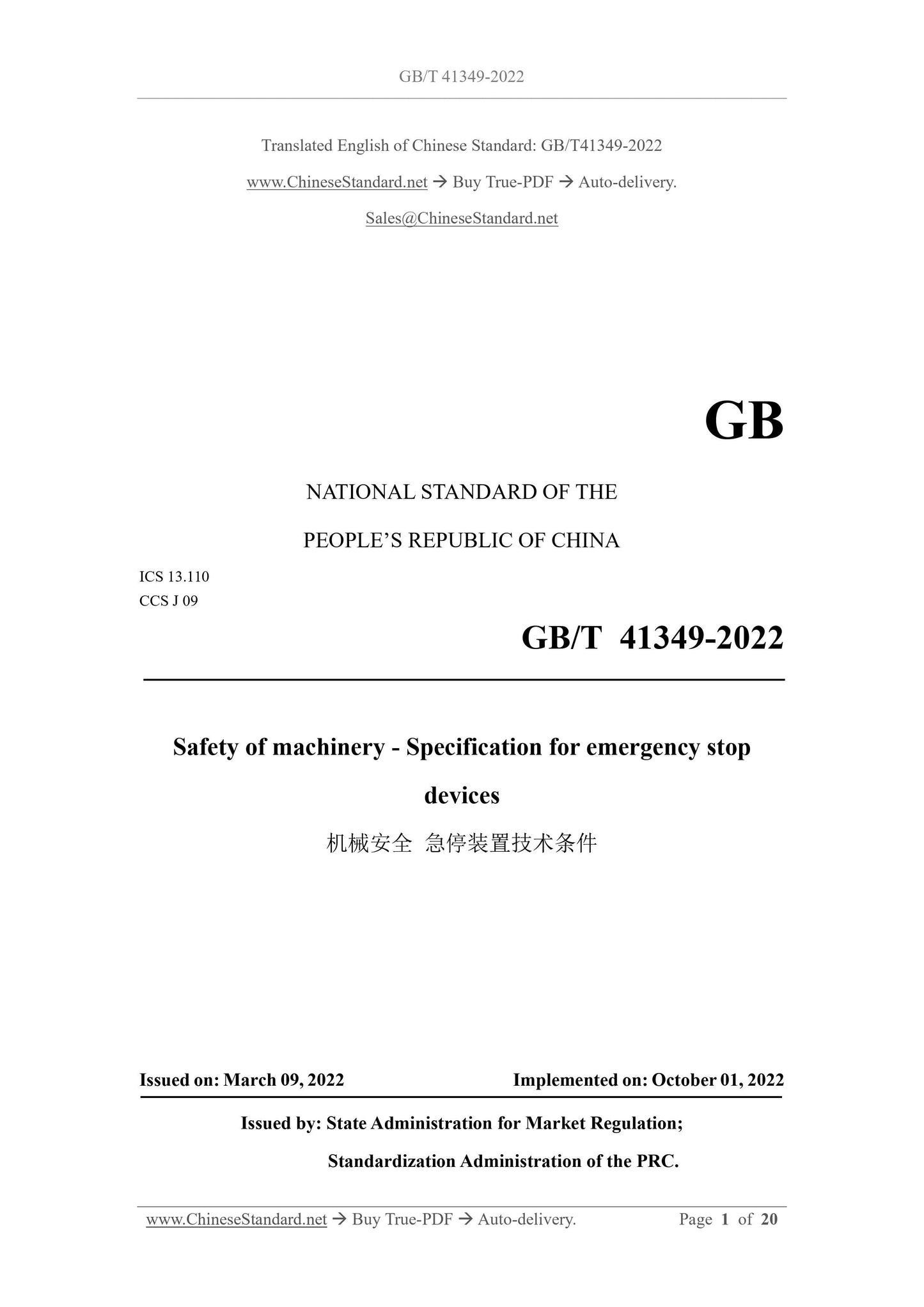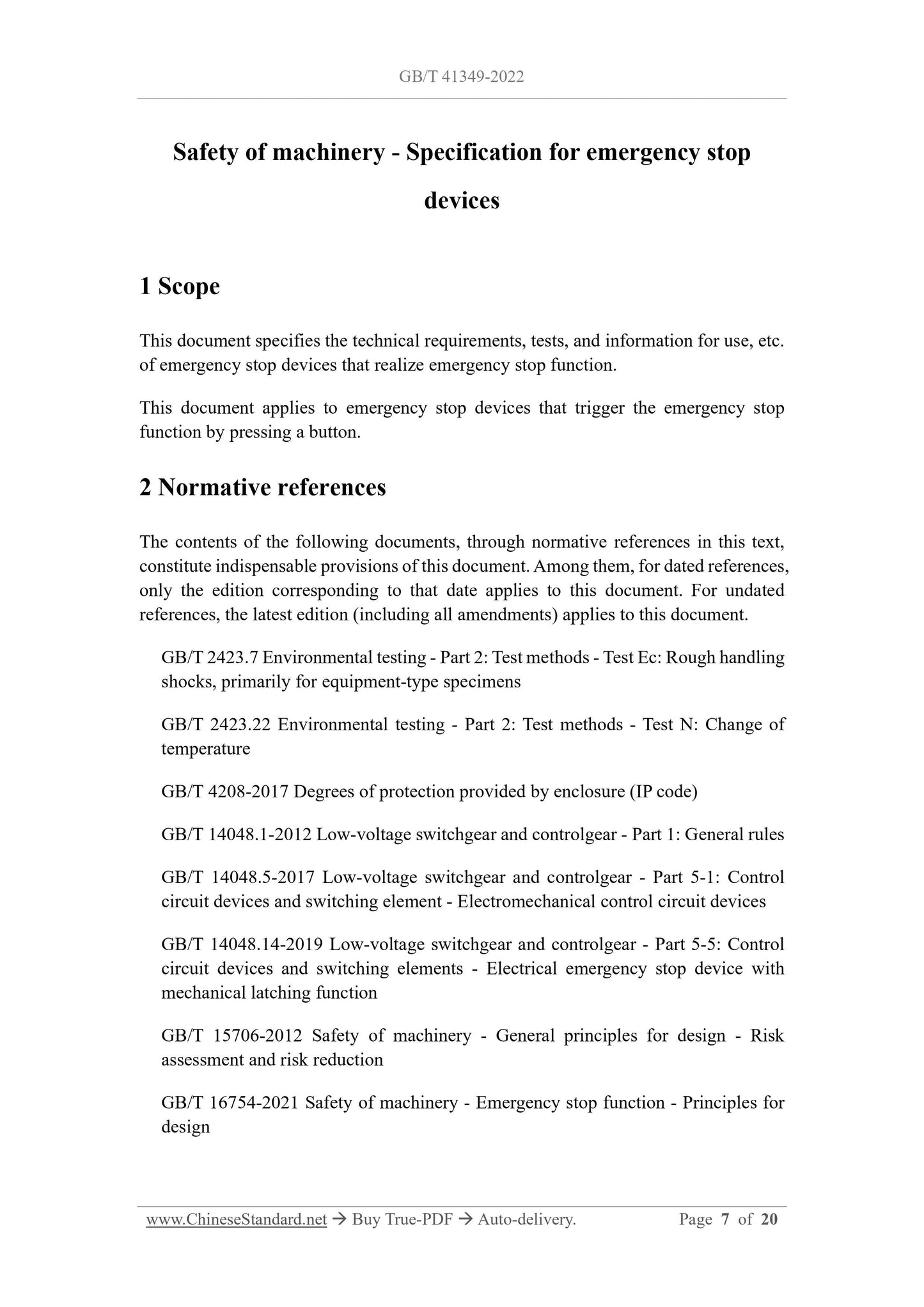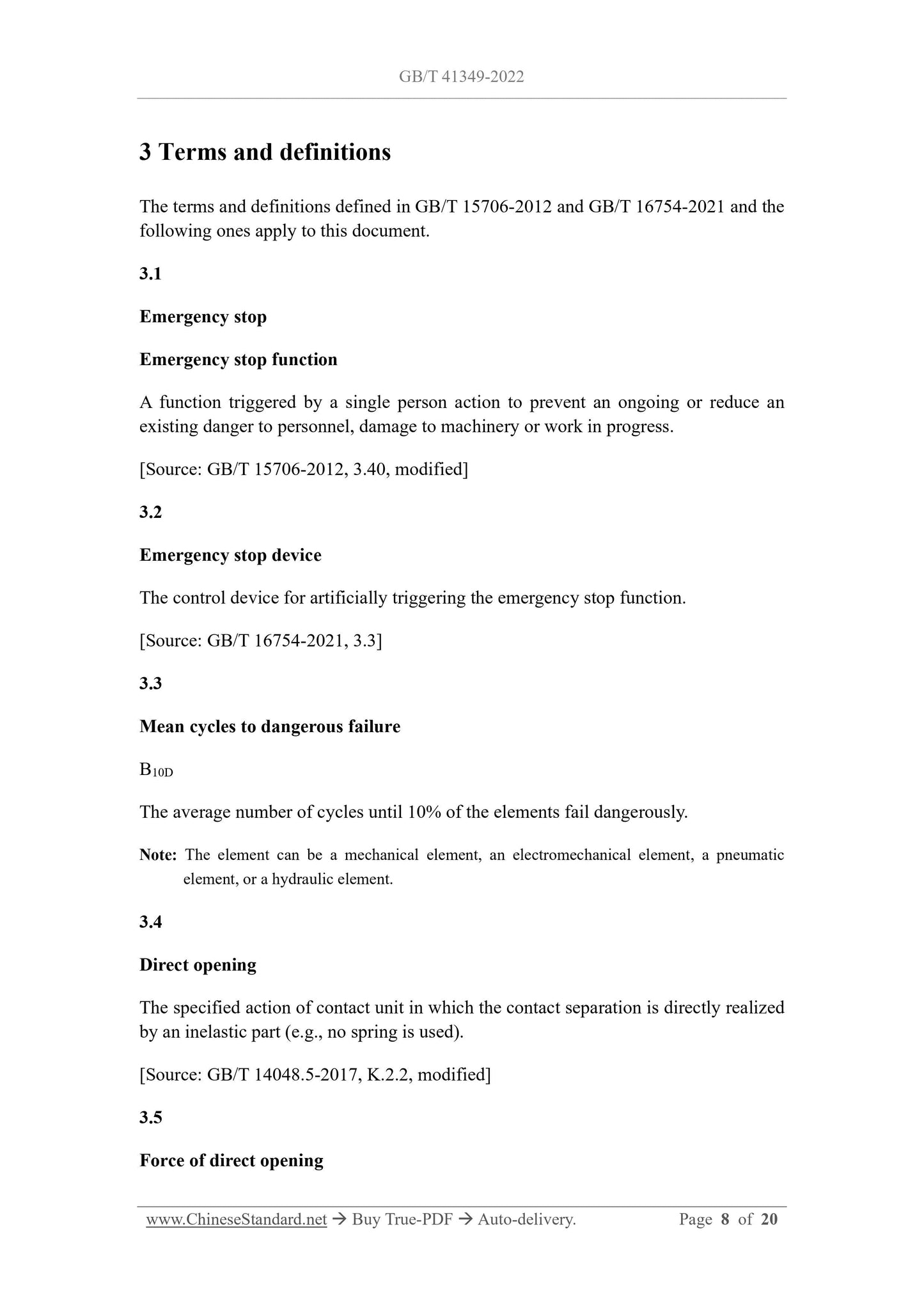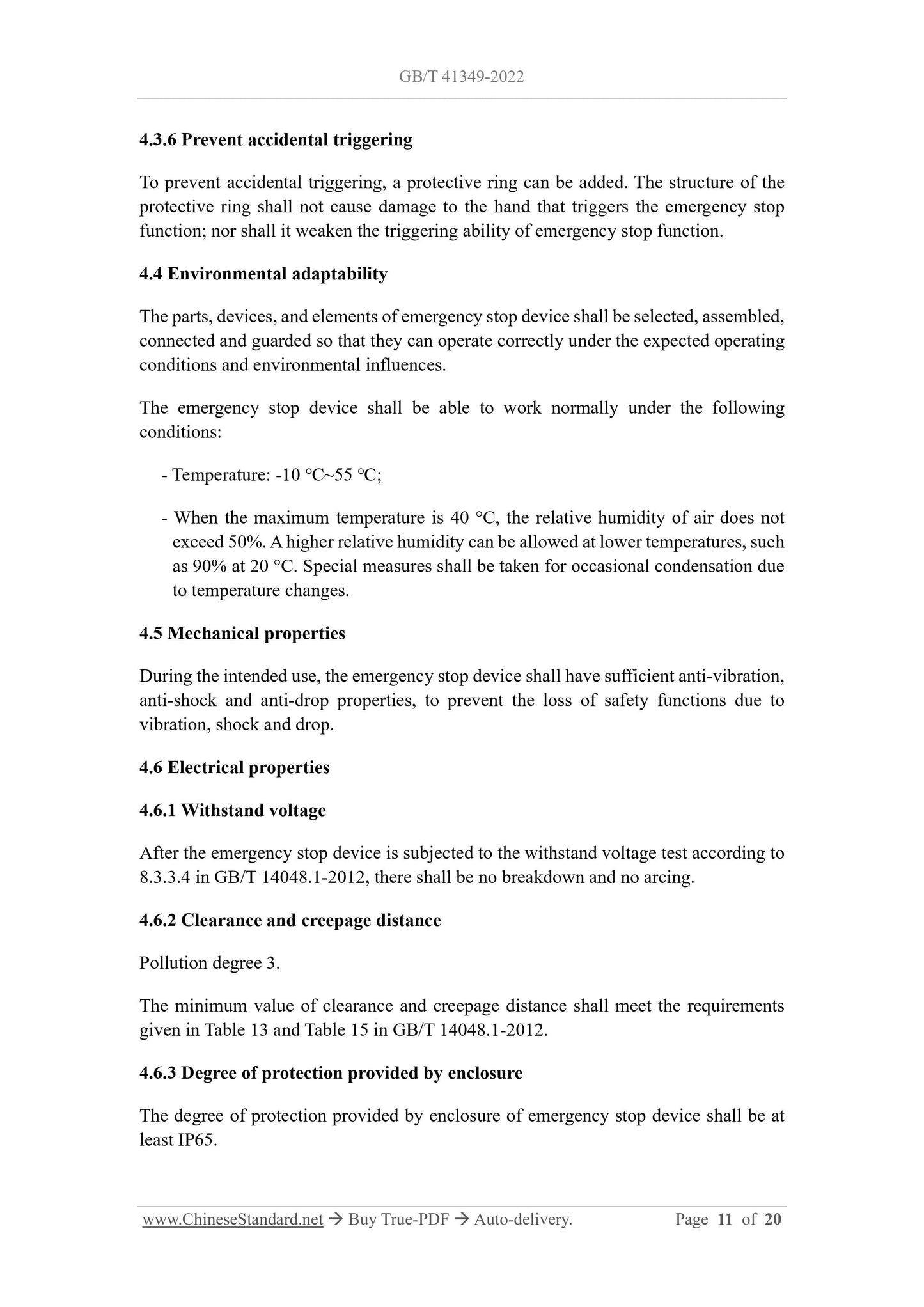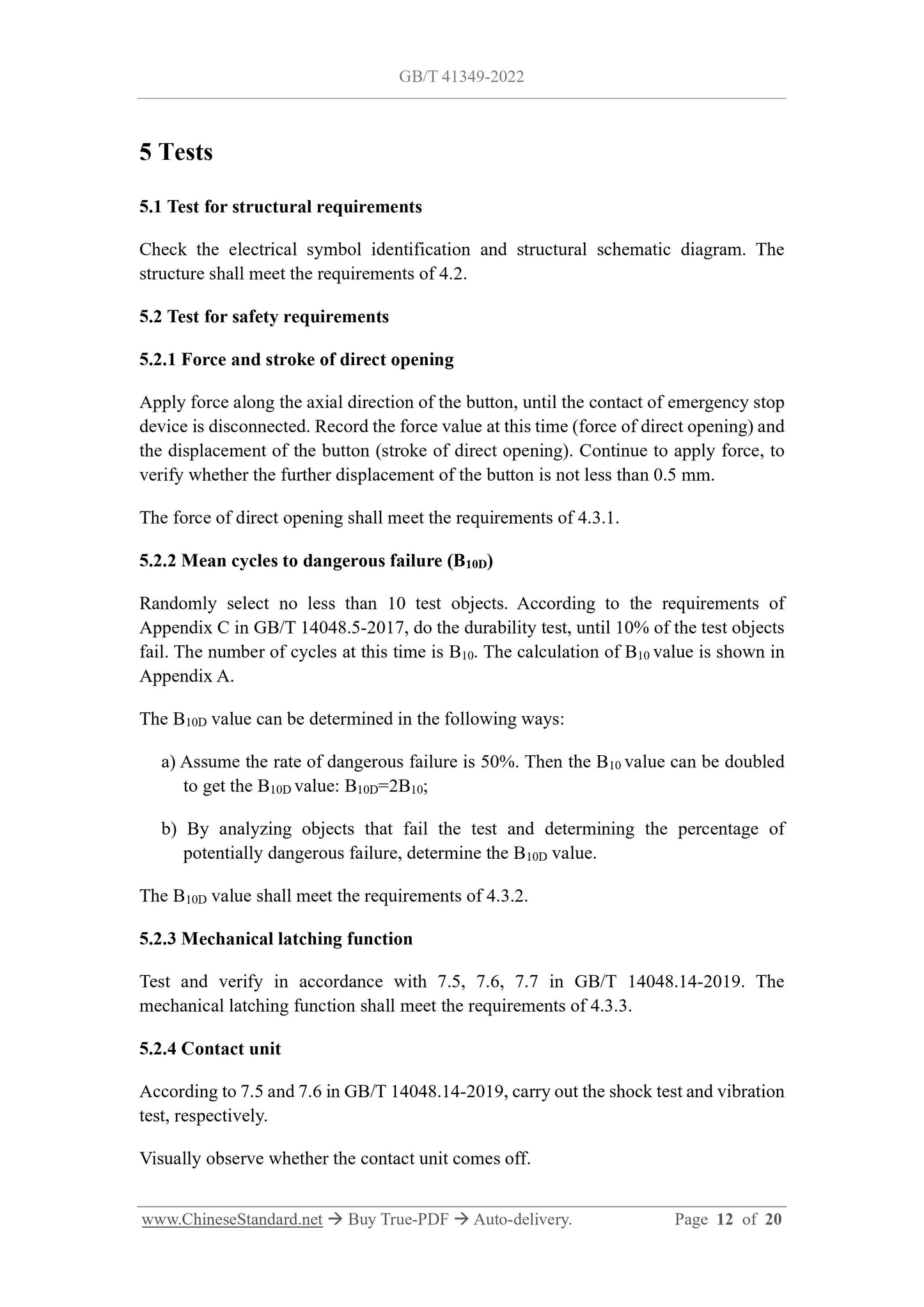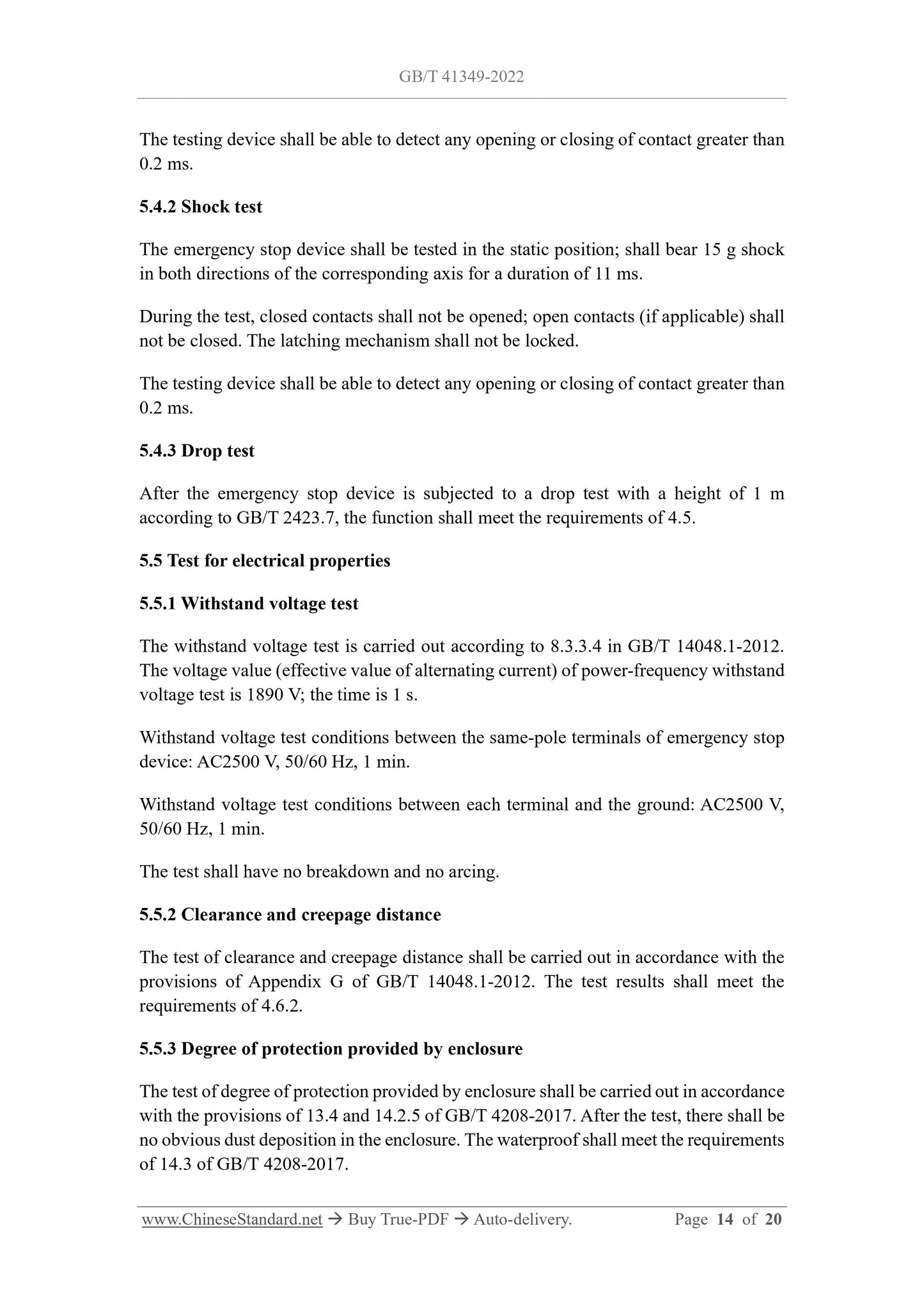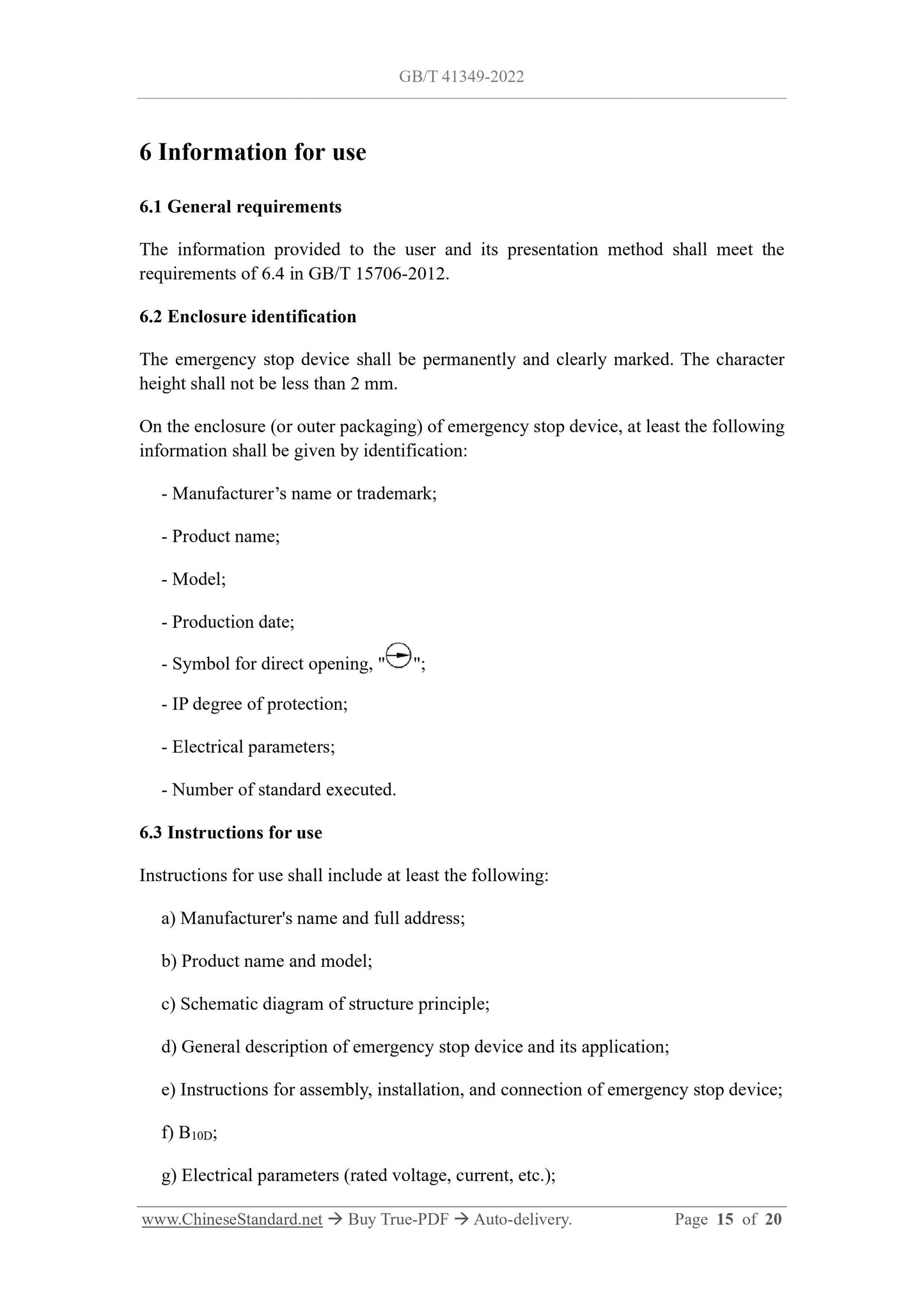1
/
of
8
www.ChineseStandard.us -- Field Test Asia Pte. Ltd.
GB/T 41349-2022 English PDF (GB/T41349-2022)
GB/T 41349-2022 English PDF (GB/T41349-2022)
Regular price
$230.00
Regular price
Sale price
$230.00
Unit price
/
per
Shipping calculated at checkout.
Couldn't load pickup availability
GB/T 41349-2022: Safety of machinery - Specification for emergency stop devices
Delivery: 9 seconds. Download (and Email) true-PDF + Invoice.Get Quotation: Click GB/T 41349-2022 (Self-service in 1-minute)
Newer / historical versions: GB/T 41349-2022
Preview True-PDF
Scope
This document specifies the technical requirements, tests, and information for use, etc.of emergency stop devices that realize emergency stop function.
This document applies to emergency stop devices that trigger the emergency stop
function by pressing a button.
Basic Data
| Standard ID | GB/T 41349-2022 (GB/T41349-2022) |
| Description (Translated English) | Safety of machinery - Specification for emergency stop devices |
| Sector / Industry | National Standard (Recommended) |
| Classification of Chinese Standard | J09 |
| Word Count Estimation | 14,130 |
| Issuing agency(ies) | State Administration for Market Regulation, China National Standardization Administration |
Share
